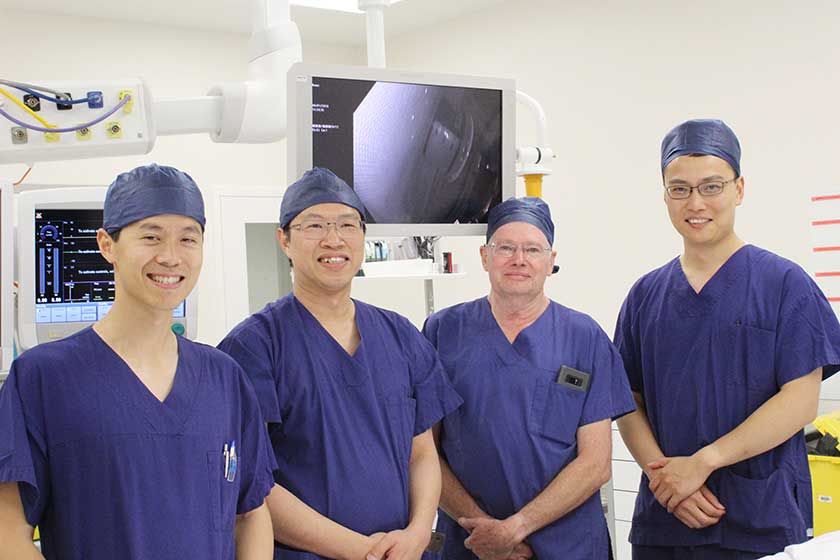Diagnosis of coeliac disease
Midland Gastroenterologists provide a helpful guide for general practitioners to diagnose patients with ceoliac disease, following gold standards and latest research results.
14 Feb 2018

What is coeliac disease?
Coeliac disease (CD) is a chronic immune-mediated disorder characterised by gastrointestinal pathology and systemic manifestations. In genetically-susceptible individuals, exposure to dietary gluten triggers a number of inflammatory changes within the small intestinal mucosa responsible for its disease pathogenesis.
The presenting features of CD can be varied, which may contribute to under-recognition of this condition. Untreated CD may result in significant medical complications, with negative impacts on psychosocial well-being and quality of life. Timely diagnosis and treatment of CD is therefore important for individuals with this condition.
Prevalence of CD
CD traditionally was considered a disease affecting Caucasions of northern European descent with a prevalence of about one percent. Recent epidemiological studies increasingly demonstrate CD as a global disease with heterogeneous prevalence. In addition, serological screening studies have reported an increasing incidence of CD by two- to five-fold over the past 50 years. This increase is multifactorial: a true rise in disease incidence over time, increasing awareness of CD amongst clinicians and the population and greater utilisation of serological tests identifying patients with atypical presentations.
Current gold standard to diagnose CD
Guidelines appropriate state that individuals should maintain a gluten containing diet prior to testing to minimise false-negative serology or histology. The Coeliac Society of Australia suggests a six-week gluten ‘challenge’ comprising at least four slices of white bread (approximately 6g of gluten) per day for adult patients before testing. A suggested diagnostic algorithm is shown below.
- Coeliac serology - Serology is the recommended first-line test for patients with suspected CD. Available serological tests quantify either auto-antibodies (anti-tTG) or antibodies against the antigenic gliadin component of dietary gluten (anti-DGP and anti-AGA). The most widely used serological tests are anti-tTG and anti-DGP as these have the highest sensitivity (~90%) for CD. A concurrent serum IgA level should be measured as selective IgA deficiency is increased 10- to 16-fold in those with CD, and these individuals will therefore test negative to IgA based assays.
- Duodenal histology - Duodenal biopsy by gastroscopy is essential to confirm diagnosis of CD and should be considered for all patients with positive serology or when there is high clinical suspicion. As the histological changes may be patchy, diagnostic accuracy is increased by biopsy number and current literature supports obtaining four to six. Histological features of CD include intraepithelial lymphocytosis (IELs), villous atrophy and crypt hyperplasia.
- HLA typing - Testing for HLA-DQ2 and -DQ8 is valuable in suspected CD as virtually all patients with CD possess one of these HLA types. Accordingly absence of HLA-DQ2 or HLA-DQ8 genotypes effectively excludes the diagnosis of CD and is particularly useful when serology and duodenal histology are equivocal. In addition, unlike serology and histology, the presence of CD HLA genotypes is not influenced by dietary gluten. Conversely, the high frequency of these predisposing genes in the general population (40%) limits utility of HLA typing in CD case finding, and their presence in isolation is insufficient to confirm a diagnosis of CD.
Diagnostic dilemmas with screen for CD
Screening and case finding
Studies have not supported population-based screening for CD. Screening should be distinguished from case finding patients with subtle disease manifestations or higher risk categories where the value of serological testing is widely accepted. Patients considered high risk of CD include those with typical clinical symptoms (diarrhoea, weight loss, abdominal bloating) and iron deficiency anaemia, type 1 diabetes mellitus, autoimmune thyroid disease, autoimmune liver disease, SLE, Down, William and Turner syndromes and inflammatory bowel disease. In addition, relatives of affected patients have an increased risk of developing CD. The risk is highest in monozygotic twins (75%) and risk of first degree relatives varies from 5-11%. Atypical CD may present with minor gastrointestinal symptoms but have predominantly extra-intestinal manifestations. Patients will still have positive serology and diagnostic histological changes. The most common atypical presentation of CD is dermatitis herpetiformis, an intensely pruritic rash on the extensor surfaces of the extremities with pathognomonic cutaneous IgA deposition. Other atypical presentations include unexplained short stature, delayed puberty, infertility, recurrent foetal loss, vitamin deficiencies, unexplained fatigue, and unexplained elevation in hepatic transaminases, osteoporosis and dental enamel hypoplasia. A variety of neuropsychiatric condition,s such as dysthymia, peripheral neuropathy, ataxia and migraine headaches have also been associated with CD.
Serology positive, histology negative
Possible reasons include false-positive serology, false-negative histology, potential CD, or the recently described and evolving concept of non-coeliac gluten sensitivity (NCGS).
False-positive serology, false-negative histology
False-positive tTG antibody results are uncommon (10%) and are typically of low titres. False-negative histology is rare and may arise due to inadequate duodenal sampling, commencement of a gluten free diet (GFD) prior to testing or missed subtle histological abnormalities. Review by a specialist gastrointestinal pathologist should be performed if clinical suspicion of CD persists. If a discrepancy between serology and histology remains after excluding those confounders, HLA typing can be performed. In patients who carry HLA-DQ2 or -DQ8, repeat serology and duodenal biopsies after taking a strict diet containing gluten for 6 weeks may improve diagnostic yield.
Potential CD
Some patients with genetically determined gluten intolerance do not develop, or develop delayed, small intestinal mucosal changes. Potential CD refers to the finding of positive serology with normal or slightly increased duodenal IELs in patients who later develop symptoms and histological changes of CD.
Non-coeliac gluten sensitivity
More people consume a GFD than there are individuals with CD, diagnosed or undiagnosed. This demand is driven by growing numbers of individuals with symptoms, but who do not fulfil the diagnostic criteria for CD. Studies have so far been conflicting with regard to improvements in bloating, abdominal pain and diarrhoea in patients with NCGS following GFD. However as no diagnostic criteria for NCGS exist, it remains a diagnosis of exclusion following negative testing for CD and wheat allergy.
Serology negative, histology positive
Seronegative CD is uncommon but may occur in a number of settings. First, selective IgA deficiency will cause negative serology when only an IgA antibody assay is used. Second, false-negative serology occurs in about 1% of patients, even if not IgA deficient. Third, serology may be less sensitive than intestinal mucosa to gluten stimulation, and it is possible that a low-gluten diet can cause abnormal histology with negative serology. HLA-DQ2 and -DQ8 testing is particularly useful in these patients as a negative result virtually excludes a diagnosis of CD.
Other causes of villous atrophy
A number of aetiologies other than CD can cause villous atrophy and include common variable immunodeficiency, autoimmune enteropathy, infections such as giardiasis, Whipple’s disease and tropical sprue, intestinal lymphoma, collagenous colitis, HIV enteropathy, Crohn’s disease and malnutrition. Medications, particularly immunosuppression, such as methotrexate, mycophenolate mofetil and azathioprine are all associated with villous atrophy. A recent case series also reported reversal of villous atrophy following cessation of olmesartan.
Testing individuals already on a gluten free diet
Testing while on a GFD is associated with false-negative results and represents diagnostic challenges as abnormalities in serology and histology both depend on prolonged stimulation by dietary gluten. CD testing for those already on a GFD is best individualised. In those willing to proceed with gluten challenge, serology followed by gastroscopy and duodenal biopsy is recommended. For those continuing a GFD, HLA typing is the investigation of choice as a negative result eliminates need for further work-up. If positive for HLA-DQ2 or -DQ8, gluten challenge is suggested, followed by serology and histology testing.
We advise all patients undergo formal testing for CD prior to commencing a GFD. This is for a number of reasons:
1) CD is a serious condition and with lifelong implications for a GFD
2) patients can be assured their symptoms are due to CD and not by a more sinister condition
3) those with CD require screening for associated complications such as osteoporosis and nutritional deficiencies
4) first degree relatives of affected individuals have higher risk and should also be tested.
In addition, duodenal histology can grade the mucosal abnormality and the biopsy taken at diagnosis provides a baseline against which follow-up biopsies can be compared, especially in those with persistent or recurrent symptoms.
Conclusion
Coeliac disease is a relatively common condition whose diagnosis and management spans the interface between primary and specialist care. In most cases, the diagnosis is readily established and patients promptly improve after commencing a GFD. However, in some, the diagnosis is not straightforward and presents a challenge to clinicians. The current diagnostic pathway involves integration of clinical suspicion, positive serological tests and diagnostic duodenal histology. The recent introduction of HLA typing is a useful addition to the CD diagnostic algorithm but its utility is limited by a low positive predictive value. A number of non-invasive, immunological assays are under development and may improve the ease and accuracy of CD diagnosis in the coming years.

